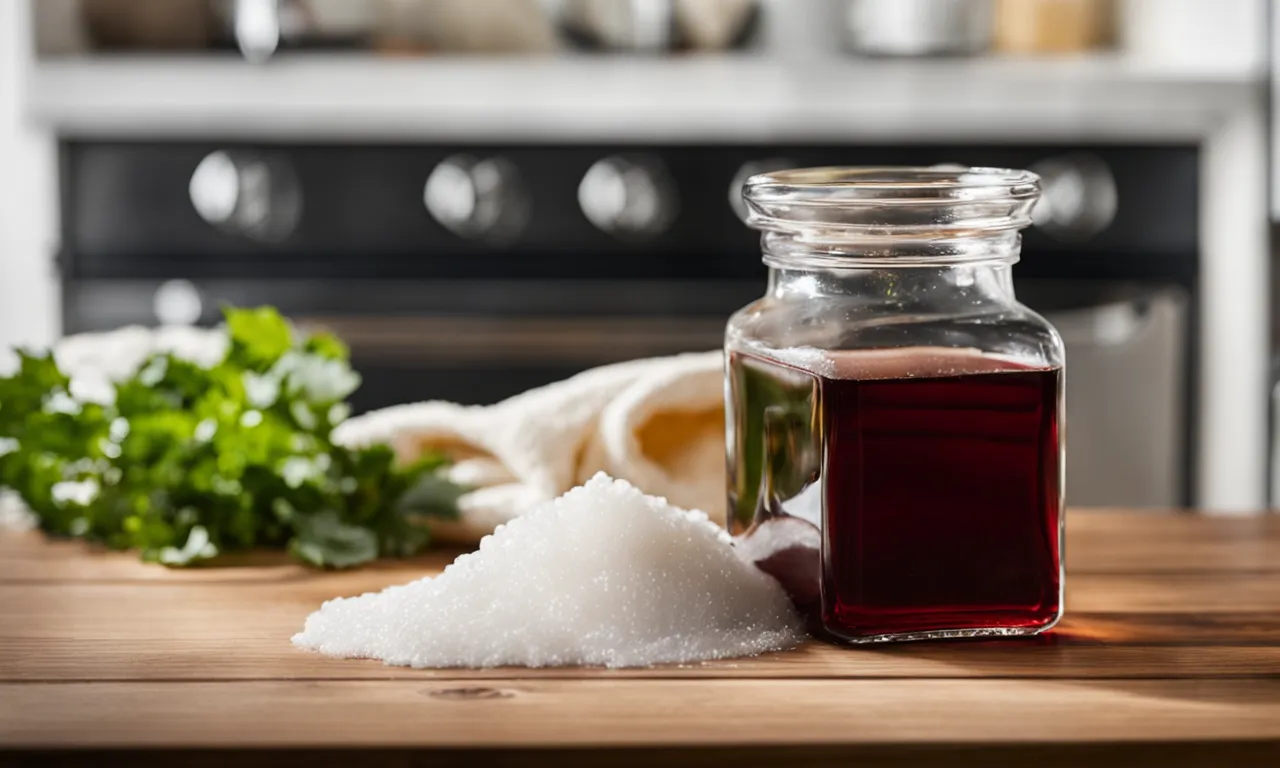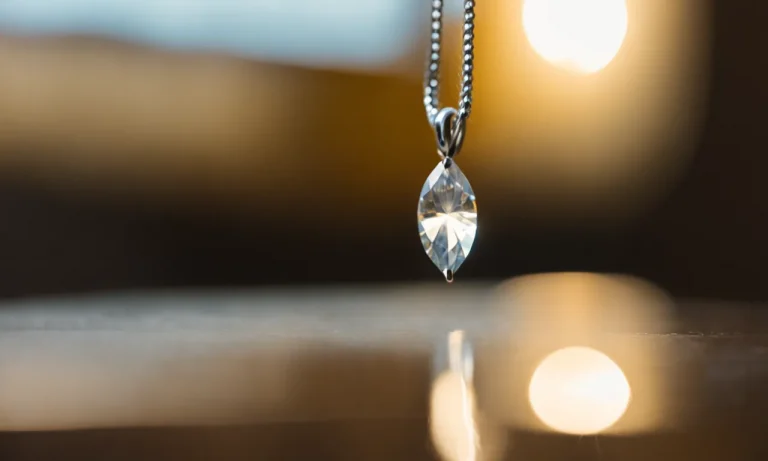How To Get Stains Out Of Nylon: A Comprehensive Guide
Nylon is a durable, stain-resistant fabric. But spills and stains can still happen! If you’ve gotten ketchup, wine, or ink on your nylon clothes, bag or furniture, don’t panic. This comprehensive guide will walk you through the steps to remove stains from nylon fabric.
If you need a quick solution, here’s the short answer: Mix a solution of warm water, dish soap, and white vinegar. Gently dab it on the stain, let it sit for 5-10 minutes, then rinse with cool water and launder as usual. The acidity of the vinegar will help break down the stain.
In this detailed 3000 word guide, you’ll learn:
– The best homemade stain removers for nylon
– Tips for old vs new stains
– How to remove specific tough stains like ink, grease, coffee, wine, grass, and more
– When to use bleach and other chemicals vs natural ingredients
– How to pre-treat stains before washing
– The right water temperature and laundry cycles to avoid setting stains
– Expert strategies to get your nylon looking brand new again
Why Nylon is Prone to Stains
Nylon is a popular synthetic fabric known for its durability and versatility. However, it is also prone to staining due to several factors:
The Smooth, Tight Weave
Nylon fabrics have a smooth and tight weave, making them less absorbent compared to natural fibers like cotton or wool. This means that when liquids or substances come into contact with nylon, they are more likely to sit on the surface rather than being absorbed.
As a result, stains can form more easily.
Static Charge Attracts Debris
Another reason why nylon is prone to stains is its tendency to generate static electricity. This static charge can attract dust, dirt, and other debris, making it more likely for stains to occur. Additionally, the static charge can make it challenging to remove stains from nylon as they tend to cling to the fabric.
Can’t Penetrate Fabric Easily
Unlike some other fabrics, liquids and substances often struggle to penetrate nylon fabric. This can be both a blessing and a curse. On the one hand, it means that spills are less likely to immediately soak into the fabric, giving you a chance to clean it before it becomes a stubborn stain.
On the other hand, it also means that stains may be more challenging to remove once they have set in.
Understanding why nylon is prone to stains can help you take the necessary precautions to prevent and treat them effectively. By being aware of these factors, you can keep your nylon items looking clean and stain-free for longer.
Homemade Stain Removers for Nylon
When it comes to removing stubborn stains from nylon, there are several effective homemade solutions you can try. These remedies are not only cost-effective, but they are also gentle on the fabric, ensuring that your nylon items remain in great condition.
Here are some tried and tested stain removers that you can make at home:
Dish Soap + Warm Water
One of the easiest and most effective stain removers for nylon is a mixture of dish soap and warm water. Simply dilute a few drops of dish soap in a bowl of warm water, and then use a clean cloth or sponge to gently blot the stained area.
Rinse the fabric thoroughly with cold water and allow it to air dry. This method works well for removing grease and oil-based stains.
White Vinegar
White vinegar is another excellent stain remover for nylon. Its acidic properties help break down stubborn stains and remove odors. To use white vinegar, mix equal parts vinegar and water in a spray bottle. Spray the solution onto the stained area and let it sit for a few minutes.
Then, blot the stain with a clean cloth until it disappears. Rinse the fabric with cold water and let it air dry.
Baking Soda
Baking soda is a versatile household ingredient that can help remove stains from nylon. Create a paste by mixing baking soda with water and apply it directly to the stain. Gently scrub the area with a soft brush or toothbrush, and then rinse with cold water.
Baking soda works well for removing tough stains like ink or coffee.
Hydrogen Peroxide
Hydrogen peroxide is a powerful stain remover that can effectively lift stains from nylon. However, it is important to test it on a small, inconspicuous area first to ensure it doesn’t cause any discoloration.
If it’s safe to use, apply hydrogen peroxide directly to the stain and let it sit for a few minutes. Blot the stain with a clean cloth and rinse with cold water.
Lemon Juice
Lemon juice is a natural bleach and stain remover that is safe to use on nylon. Squeeze fresh lemon juice onto the stain and let it sit for a few minutes. Gently scrub the area with a soft brush or cloth, and then rinse with cold water.
Lemon juice works well for removing tough stains like grass or wine.
Club Soda
Club soda is not just a refreshing beverage, but it can also be used to remove stains from nylon. Simply pour club soda directly onto the stain and let it fizz for a few minutes. Blot the stain with a clean cloth and rinse with cold water.
Club soda is particularly effective for removing stains caused by soda spills or food coloring.
Remember, it’s always a good idea to test any homemade stain remover on a small, inconspicuous area of your nylon item before applying it to the stain. This will help you ensure that the solution doesn’t cause any damage or discoloration.
With these homemade stain removers, you can keep your nylon items looking great and stain-free!
Tackling New vs Old Stains on Nylon
When it comes to removing stains from nylon, whether they are new or old, it’s important to take the right approach. Different types of stains require different methods of removal. Here are some tips to help you tackle new and old stains on nylon effectively.
Act Fast on New Stains
When you notice a new stain on your nylon fabric, it’s crucial to act quickly. The longer you wait, the more difficult it can be to remove the stain completely. Start by gently blotting the stain with a clean cloth or paper towel to absorb as much of the stain as possible.
Avoid rubbing the stain, as this can cause it to spread and become even more difficult to remove.
Once you have blotted the stain, you can apply a stain remover specifically designed for nylon fabrics. Follow the instructions on the product and test it on a small, inconspicuous area of the fabric first to ensure it doesn’t cause any damage.
Gently blot the stain remover onto the affected area and let it sit for a few minutes before rinsing it off with cold water. Repeat this process if necessary until the stain is completely gone.
Let Old Stains Soak Before Scrubbing
Old stains on nylon can be more stubborn to remove compared to new stains. To effectively tackle old stains, it’s a good idea to let the fabric soak before attempting to scrub the stain. Fill a basin or sink with warm water and add a small amount of mild detergent.
Submerge the stained nylon fabric in the soapy water and let it soak for at least 30 minutes.
After the fabric has soaked, gently scrub the stain with a soft-bristle brush or sponge. Be careful not to scrub too vigorously, as this can damage the nylon fibers. Rinse the fabric with cold water to remove any soap residue and check if the stain has been lifted.
If the stain is still visible, repeat the soaking and scrubbing process until it disappears.
Enzyme Cleaners for Set-In Stains
Set-in stains on nylon can be particularly challenging to remove. These stains have penetrated the fibers of the fabric and may require a more powerful cleaning solution. Enzyme cleaners are highly effective in breaking down organic stains such as food, blood, or sweat.
When using an enzyme cleaner, carefully follow the instructions provided by the manufacturer. Apply the cleaner directly to the stain and let it sit for the recommended amount of time. Afterward, rinse the fabric thoroughly with cold water.
You may need to repeat this process multiple times to completely eliminate the set-in stain.
Remember, it’s always important to check the care instructions of your nylon fabric before attempting any stain removal method. If you’re unsure about a particular stain or don’t feel confident in your ability to remove it, it’s best to seek professional help or consult a stain removal expert.
How to Remove Specific Stains
Coffee and Tea Stains
Spilled your morning coffee on your favorite nylon shirt? Don’t panic! To remove coffee and tea stains from nylon, start by gently blotting the stain with a clean cloth or paper towel to absorb as much liquid as possible. Then, mix a solution of equal parts water and white vinegar.
Apply the solution to the stain and let it sit for a few minutes. Rinse with cold water and wash the nylon garment as usual. For stubborn stains, you can also try using a stain remover specifically designed for coffee and tea stains.
Red Wine and Berries
Accidentally spilled red wine on your nylon tablecloth during a dinner party? No worries! To remove red wine and berry stains from nylon, quickly blot the stain with a clean cloth to remove any excess liquid. Next, sprinkle salt or baking soda on the stain to absorb the remaining wine.
Let it sit for a few minutes, then rinse with cold water. If the stain persists, you can try using a commercial stain remover or a mixture of hydrogen peroxide and dish soap. Just remember to test the solution on a small, inconspicuous area of the fabric first.
Grease and Oil-Based Stains
Grease and oil stains can be tough to tackle, but with the right approach, you can remove them from nylon. Start by blotting the stain with a clean cloth or paper towel to remove any excess grease. Then, apply a small amount of dish soap directly to the stain and gently rub it in.
Let the soap sit on the stain for a few minutes, then rinse with warm water. If the stain persists, you can try using a pre-wash stain remover or a mixture of baking soda and water. Just be sure to follow the instructions on the product and test it on a small, inconspicuous area first.
Tomato-Based Stains like Ketchup
Got some ketchup or tomato sauce on your nylon apron while cooking? No problem! To remove tomato-based stains from nylon, start by scraping off any excess sauce with a spoon or butter knife. Then, mix a solution of warm water and mild dish soap.
Gently rub the solution into the stain using a clean cloth or sponge. Rinse with cold water and repeat the process if necessary. If the stain persists, you can also try using a stain remover specifically designed for tomato-based stains.
Grass and Dirt Stains
Active kids and outdoor enthusiasts may encounter grass and dirt stains on their nylon clothing. To remove these stains, start by brushing off any loose dirt or grass with a soft-bristle brush or a toothbrush. Then, pretreat the stain by applying a laundry detergent directly to the affected area.
Let it sit for a few minutes, then wash the garment in the hottest water recommended for the fabric. If the stain is still visible after washing, repeat the process or try using a stain remover.
Ink and Makeup Stains
Accidentally got ink or makeup on your nylon handbag? Don’t fret! To remove ink and makeup stains from nylon, start by blotting the stain with a clean cloth or paper towel to absorb as much of the stain as possible.
Next, apply rubbing alcohol or nail polish remover to a cotton ball or clean cloth and gently dab the stain. Be sure to work from the outside of the stain inward to prevent it from spreading. Rinse with cold water and repeat the process if necessary.
For makeup stains, you can also try using a mild dish soap or a commercial stain remover.
Sweat and Body Oils
Sweat and body oils can leave unsightly stains on nylon garments. To remove these stains, pretreat the affected area by applying a small amount of laundry detergent directly to the stain. Gently rub the detergent into the fabric, then let it sit for a few minutes.
Wash the garment as usual, but be sure to use the hottest water recommended for the fabric. If the stain persists, you can try using a stain remover or soaking the garment in a mixture of warm water and oxygen bleach.
Just be sure to follow the instructions on the product and test it on a small, inconspicuous area first.
When to Use Bleach or Other Chemicals
When it comes to removing stains from nylon, knowing when and how to use bleach or other chemicals can be crucial. Here are some important guidelines to keep in mind:
Only for White or Light Colored Nylon
Bleach and other chemicals should only be used on white or light colored nylon fabrics. Using bleach on dark or colored nylon can result in discoloration and damage to the fabric. It’s always a good idea to test the bleach or chemical solution on a small, inconspicuous area of the fabric before applying it to the stain.
Oxygen Bleach is Gentler than Chlorine
When using bleach on nylon, it’s generally recommended to opt for oxygen bleach rather than chlorine bleach. Oxygen bleach is milder and less likely to cause damage to the fabric. It is also considered to be more environmentally friendly.
Oxygen bleach can effectively remove stains and brighten white or light colored nylon without the harsh effects of chlorine bleach.
Other Chemical Options
In addition to bleach, there are other chemical options available for stain removal on nylon. One popular option is using a stain remover specifically designed for nylon fabrics. These stain removers are formulated to break down and remove tough stains without causing damage to the fabric.
Another option is using a mild detergent or dish soap mixed with warm water to create a cleaning solution. This can be applied directly to the stain and gently scrubbed with a soft brush or cloth. Always follow the manufacturer’s instructions and recommendations when using any chemical solution on nylon.
Remember, it’s important to approach stain removal on nylon with caution and care. If you’re unsure about using bleach or other chemicals, it’s always best to consult a professional cleaner or follow the instructions provided by the manufacturer of the fabric.
Pre-Treating Stains Before Washing
When it comes to getting stains out of nylon, pre-treating them before washing is important. This step can help break down the stain and make it easier to remove during the wash cycle. Here are some effective methods for pre-treating stains on nylon:
Spot Cleaning with a Toothbrush
For smaller stains, spot cleaning with a toothbrush can be quite effective. Simply wet the stained area with water and apply a small amount of mild detergent directly to the stain. Gently scrub the stain using a toothbrush in a circular motion, being careful not to damage the fabric.
Rinse thoroughly with water and repeat the process if necessary. This method works well for stains like food, makeup, or dirt.
Soaking in Vinegar Water
Vinegar is a natural and effective stain remover for nylon fabric. To use this method, mix equal parts of white vinegar and water in a basin or sink. Soak the stained nylon item in the vinegar water solution for about 30 minutes. After soaking, gently rub the stained area with a soft cloth or sponge.
Rinse the item with clean water and proceed with regular washing. Vinegar is particularly useful for removing sweat stains or yellowing on nylon fabric.
Using Laundry Pre-Treatment Sprays
Another option for pre-treating stains on nylon is to use laundry pre-treatment sprays. These sprays are specifically formulated to break down and lift stubborn stains from fabric. Simply spray the pre-treatment directly onto the stain, following the instructions on the product label.
Allow the spray to penetrate the stain for the recommended amount of time before washing the garment as usual. This method is effective for a wide range of stains, including oil, ink, or grass.
Remember, it’s always a good idea to test any stain removal method on a small, inconspicuous area of the fabric before treating the entire stain. This will help ensure that the treatment does not cause any damage or discoloration to the nylon fabric.
With proper pre-treatment, you can effectively remove stains from nylon and keep your garments looking great for a long time.
Washing and Drying Tips
When it comes to getting stains out of nylon, proper washing and drying techniques can make a significant difference. Here are some tips to help you effectively clean your nylon items:
Wash in Cool or Warm Water
When washing nylon, it is best to use cool or warm water instead of hot water. Hot water can cause the fabric to shrink or lose its shape. Additionally, using a gentle cycle on your washing machine will help preserve the integrity of the nylon material.
Avoid using harsh detergents or bleach, as they can damage the fabric. Instead, opt for a mild detergent specifically formulated for delicate fabrics.
Air Dry Instead of the Dryer
Avoid using a dryer to dry your nylon items, as the high heat can weaken the fabric and cause it to lose its elasticity. Instead, hang or lay the items flat to air dry. This not only helps maintain the shape and quality of the nylon, but it also reduces the risk of shrinking or damage caused by excessive heat.
If you need to speed up the drying process, you can use a fan or set the items in a well-ventilated area.
Wash Stained Items Separately
When dealing with stained nylon items, it is important to wash them separately from other garments. This prevents the stain from transferring to other fabrics and causing further damage. Before washing, pretreat the stain with a stain remover or a mixture of mild detergent and water.
Gently rub the stain with a soft cloth or sponge, working from the outside in to avoid spreading the stain. Allow the pretreatment to sit for a few minutes before washing as usual.
Remember, it’s always a good idea to check the care label on your nylon items for specific washing instructions. Following these tips will help you keep your nylon items looking clean, fresh, and stain-free!
Stubborn Stain Removal Methods
When it comes to removing stubborn stains from nylon, there are several effective methods that can help you restore the look of your fabric. Here are a few tried-and-tested techniques:
Steam Cleaning
One of the most popular methods for removing tough stains from nylon is steam cleaning. This technique utilizes high-temperature steam to break down and lift stains from the fabric. Steam cleaning machines can be rented or purchased for home use, making it a convenient option for tackling stubborn stains.
Simply follow the manufacturer’s instructions and watch as the power of steam works its magic on your nylon fabric.
Commercial Carpet Cleaners
If you’re dealing with a particularly stubborn stain on your nylon fabric, it may be worth considering the use of a commercial carpet cleaner. These machines are designed to deep clean and remove tough stains from various types of fabrics, including nylon.
Many carpet cleaners come with specific attachments for upholstery, making them suitable for use on nylon furniture or clothing. Always read the instructions and test the cleaner on a small, inconspicuous area of the fabric before treating the entire stain.
Solar Bleaching
In some cases, sunlight can be a surprisingly effective stain remover for nylon fabric. Solar bleaching works by harnessing the power of the sun’s UV rays to break down and fade stains. Simply place the stained nylon item in direct sunlight for a few hours, making sure to flip it over to ensure even exposure.
Keep in mind that this method may not be suitable for all types of stains or colors, so it’s important to test it on a small area first. Additionally, prolonged exposure to sunlight may cause fading of the fabric, so use this method with caution.
Remember, it’s always a good idea to consult the manufacturer’s instructions or seek professional advice if you’re uncertain about the best method to remove a specific stain from your nylon fabric.
Conclusion
No matter what kind of stain your nylon item has endured, don’t give up hope! With the right techniques and a little elbow grease, you can get even set-in stains out. Always start with natural ingredients like dish soap and vinegar first before moving to harsher chemicals.
Scrub gently, rinse thoroughly, and repeat steps as needed. With this comprehensive guide, you now have all the tools to make your nylon look clean and new again.
Some stains may require professional help if they’ve truly set into the fibers. But hopefully you feel empowered to tackle any fresh stains right away. Just remember – act fast, use gentle cleaners, rinse well, and wash on cold. Your nylon will thank you!







